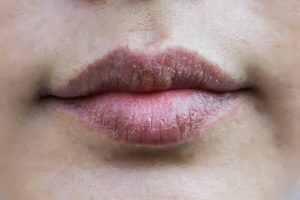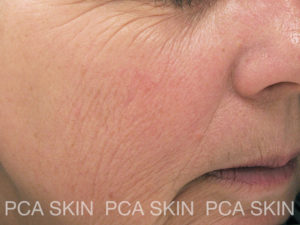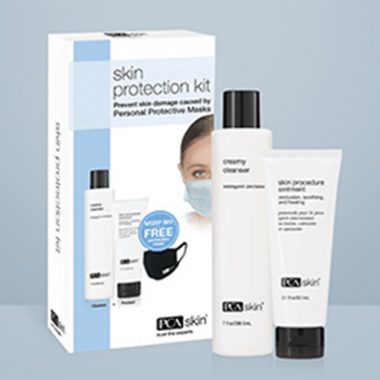Dehydrated Skin
Dehydrated skin is skin lacking in moisture – it is not so much a skin type as a skin condition. Even oily and combination skin can be dehydrated. Dehydrated skin occurs when the protective uppermost layer of the skin, known as the stratum corneum, is lacking in moisture.
Jump to
Common

A real sign of dehydration is if your skin suddenly feels uncomfortable, especially in cold weather or when the temperature changes. The damaged barrier that lets moisture out also lets irritants in, so reactive skin is another sign of dehydration. However, while your complexion can feel rough, flaky and even sore, it’s relatively simple to rectify.

Types
& Causes
Dehydrated skin often experiences the following symptoms:
- Itchiness
- Dullness
- Darker under-eye circles
- Sunken eyes
- “Shadows” around the face (especially under the eyes and around the nose)
- Increased incidence or appearance of fine lines and surface wrinkles
Common Causes:
- External factors such as weather, physical dehydration, diet or product use. It’s essentially a lack of water within the skin
- Prolonged exposure to the sun causes water to evaporate from the skin
- Cold winds, air conditioning units, forced air heating
- Excess intake of alcoholic beverages, caffeine and certain medications such as nasal decongestants.
- More often than not [dehydrated skin is] the result of using skincare products that contain harsh or skin-sensitizing ingredients. It can also develop from using the wrong products for your skin, which leads to an imbalance.
Treatments
& Protocols
How to Treat
-
Dehydrated Skin: Avoid Harsh Cleansers -
Dehydrated Skin: Gently Exfoliate -
Dehydrated Skin: Control Excessive Dryness -
Dehydrated Skin: Protect from UV Exposure (SPF) -
Dehydrated Skin: Lifestyle Best Practices
Professional Treatment Protocols
-
Sensi Peel® Treatment Protocol -
Smoothing Body Peel® Treatment Protocol -
Ultra Peel® Treatment Protocol -
Hydrate: Therapeutic Oat Milk Mask for Sensitized Skin Conditions -
Enzymatic Treatment Protocol



